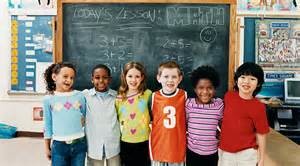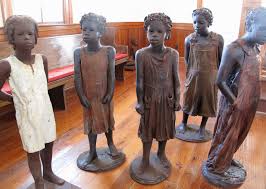Mistrust between Students and Teachers
Mistrust can occur between students and teachers who differ in their cultural backgrounds. This mistrust can be caused by misunderstandings between them. Under these circumstances, the students may find it difficult to learn. All teachers need training to understand grade school students from various cultures. Many schools have a majority of African American, Hispanic or Asian students and others have a majority of a variety of minority students. Sadly, 82% of our teachers are Caucasian. We need more teachers from a variety of cultures and races in our grade schools so as to avoid relationships of mistrust.
At least 1/2 of our students in public schools are of color (including Black and Hispanic, and Asian). Girls of color have more difficulty learning than Caucasian girls. Could the lack of teachers of color create mistrust that affects these girls’ ability to learn? Here is a meeting in New Jersey relating this subject – Bright Futures: Improving Education and Transforming Outcomes for Girls of Color.
To give an example; will mistrust occur between students of color, whose great, great grand parents were enslaved property, and their Caucasian teachers whose great, great grandparents may have been slave owners or traders?
Recently, I, a Caucasian volunteer teacher, offered to read with a 7 year old African American student whom I shall call Jane. She was reluctant to work with me. Did she feel mistrust towards me? Would I understand her?
Finally, Jane offered to read me a story about Harriet Tubman, as an 8 year old enslaved child. Jane told me that young enslaved girls were assigned the task of nursemaid for the babies and children in the household. The slave girls stayed awake at night because they  were whipped if a baby cried out. In addition, the mother often became jealous of the close relationships between her children and her young slaves. She would then administer harsh punishment. Jane brought me into the world of her heritage.
were whipped if a baby cried out. In addition, the mother often became jealous of the close relationships between her children and her young slaves. She would then administer harsh punishment. Jane brought me into the world of her heritage.
Jane started reading aloud then stopped to ask me to read a sentence spoken in anger by a white slave owner, and mother. She was reprimanding Harriet, a nursemaid, for accidentally tipping over a pitcher of water. Then she punished her by sending her to the harsh work in the cotton fields – a severe punishment for an 8 year-old child.
Fortunately the book ended on a positive note. Harriet planned her escape from slavery. She achieved her freedom in her late 20’s. Jane could look up to Harriet as a heroine. But she must have felt mistrust for me, her volunteer teacher, whose ancestors may have treated enslaved children with harsh brutality.


We need more culturally appropriate books for children living in poverty so they can see a pathway to a better life.